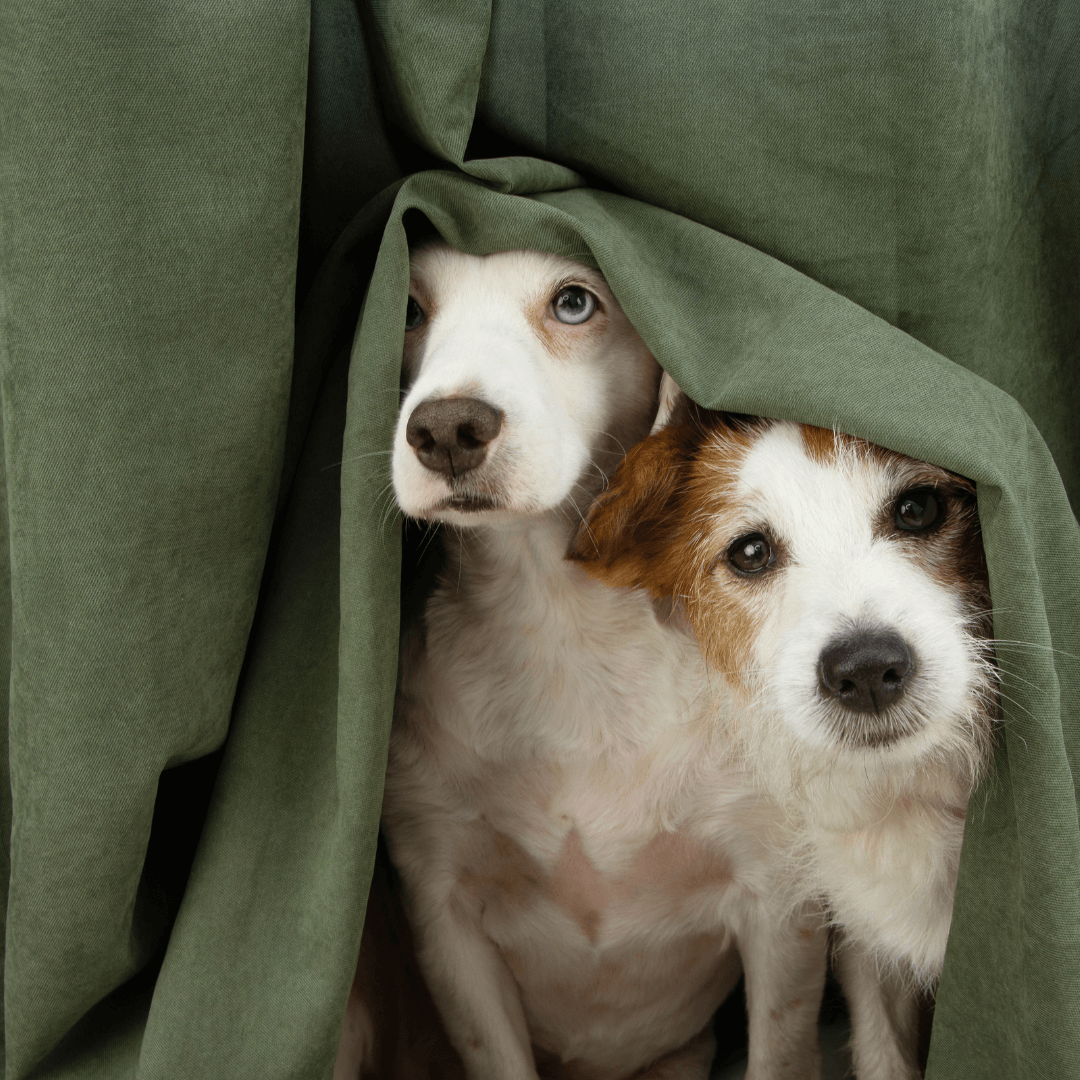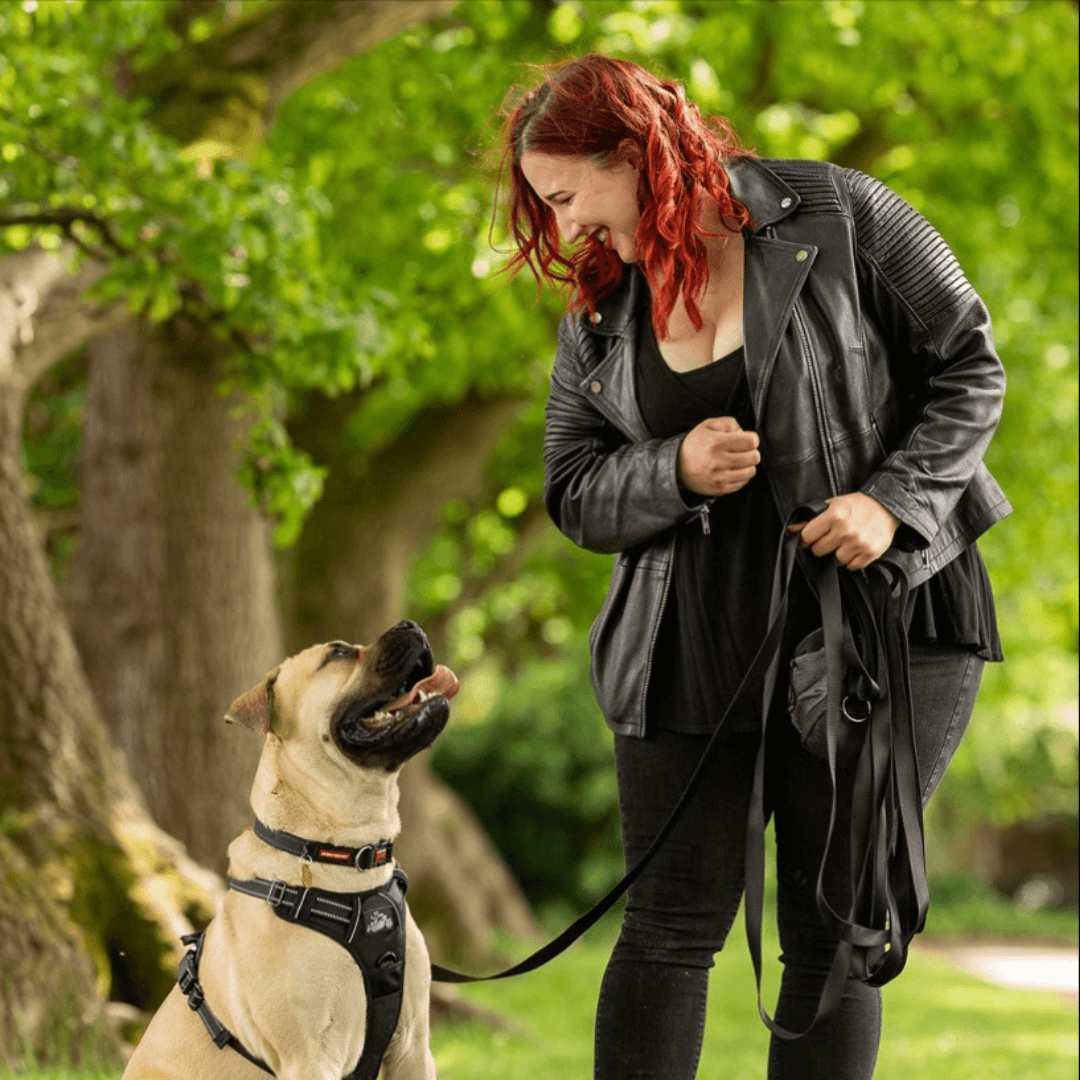Separation anxiety is a behavioral disorder observed in dogs, characterised by excessive distress when separated from their beloved owners.
Dogs are naturally social animals, forming strong bonds with their human caregivers. When left alone, they may exhibit various signs of anxiety, such as excessive vocalisation, destructive behaviour and more.
Amie Brown, an expert from Canine Pawtential, will share invaluable insights and strategies to help your dog overcome this condition and lead a more contented life. Separation anxiety is a complex issue that requires patience, understanding and a tailored approach. By the end of this guide, you'll be equipped with the knowledge and tools to support your furry companion through their journey to a happier, more relaxed state of mind.
What you'll learn

Common Signs of Separation Anxiety
It's essential to recognise the common signs of separation anxiety in dogs as early intervention can significantly improve their well-being. While not all dogs will display every sign, here are some prevalent indicators of separation anxiety:
- Excessive Vocalisation: Dogs with separation anxiety may bark, howl, or whine excessively when left alone.Destructive Behavior: They may engage in destructive behaviors like chewing furniture, digging, scratching doors, or destroying household items.
- Inappropriate urination or defecation: Dogs may eliminate indoors, even if they are typically house-trained.
- Pacing and Restlessness: Restlessness, running in circles, or pacing can be indicative of anxiety.
- Escape Attempts: Some dogs will try to escape their confinement or the house in an attempt to reunite with their owners.
- Excessive Salivation and Drooling: Anxiety can lead to increased salivation in some dogs.
- Loss of Appetite: They may refuse to eat when left alone.
- Depression: They may appear sad or depressed when their owner is not present
These signs can vary in intensity and duration, making it essential to monitor your dog's behavior for any changes that may indicate separation anxiety.
The Impact of Separation Anxiety
Separation anxiety can have significant consequences for both your dog and your household. When left unaddressed, it can lead to:
- Property Damage: Destructive behavior, such as chewing furniture or scratching doors, can result in costly damage to your home.
- Neighbor Complaints: Excessive barking and howling can lead to complaints from neighbors, causing tension in your community.
- Injury to the Dog: In severe cases, dogs attempting to escape may injure themselves or become exposed to dangerous situations.
Given these potential consequences, it's crucial to address separation anxiety promptly and effectively.
Effective Strategies to Manage Separation Anxiety (Approx. 800 words): Managing separation anxiety involves a combination of behavior modification techniques and, in severe cases, medication prescribed by a vet. Here, we'll delve into each strategy in detail to help you develop a comprehensive plan to support your dog:
Best dog food we’ve tried...and we’ve tried a lot! Marleybones is the only ever food that means an empty bowl after every meal! We’ve tried raw food, dry food, other precooked food and my very fussy dog after a week decides she doesn’t like it. It’s such a relief to find a food she loves and not have to worry about if she’s eating enough anymore! Very glad I found you!
Trustpilot
Consult Your Vet
Before embarking on a treatment plan, consult your veterinarian. It's essential to rule out any underlying medical conditions that may be contributing to your dog's anxiety. Your vet can provide guidance and may recommend medications or supplements, especially in severe cases.
Remember that with Marleybones, you get free 24/7 access to a vet hotline.
Gradual Desensitisation
Gradual desensitisation is a cornerstone of managing separation anxiety. The goal is to help your dog become more comfortable with being alone gradually. Here's how to do it:
- Start with short departures and gradually increase the time you spend away from your dog.
- Use departure cues like picking up your keys or putting on your shoes without actually leaving to reduce anxiety associated with these actions.
Create a Safe Space
Creating a designated safe space for your dog is crucial. This area should provide comfort and security in your absence. Consider the following:
- Set up a designated area or crate where your dog can feel safe and comfortable when you're not at home.
- Make this space enjoyable by adding toys, a comfortable bed, and some treats or puzzle toys to keep your dog occupied.
Exercise and Mental Stimulation
Ensuring your dog gets plenty of exercise and mental stimulation before you leave is vital. A tired dog is less likely to become anxious. Here's how:
- Prioritise regular exercise and playtime to expend your dog's energy.
- Consider interactive toys or puzzles, such as Kong or Licki Mat, to keep your dog calm and engaged while you're away. Monitor your dog with new toys to ensure they won't chew or ingest them.
Routine and Predictability
Dogs thrive on routine and predictability. Establish a consistent schedule for feeding, walks, and departures. This predictability helps reduce anxiety by making your dog feel secure in their environment. Gradually increase the time between departures so your dog gets used to you leaving and coming back.
Counterconditioning
Counterconditioning involves associating your departures with positive experiences. By doing this, you can help your dog develop a more positive outlook on your departures. Here's how:
- Give your dog a special treat or toy that they only get when you leave.
- Practice this when you're not actually leaving to break the negative association with your departure cues.

Desensitise Departure Cues
Many dogs pick up on cues that indicate you're about to leave, such as picking up your keys or putting on your coat. These cues can trigger anxiety. Desensitise your dog to these cues by:
- Repeatedly using these cues without actually leaving.
- This helps your dog learn that these cues don't always lead to you leaving, reducing their anxiety.
Medication and Professional Help
In severe cases of separation anxiety, medication prescribed by a vet may be necessary to help your dog manage their anxiety. Additionally, consider working with a professional dog trainer or behaviorist who specialises in separation anxiety. Their expertise can be invaluable in tailoring a treatment plan to your dog's specific needs.
Avoid Punishment
It's crucial never to punish your dog for their anxiety or any destructive behaviour that may result from it. Punishment only increases their stress and doesn't address the root cause of the problem. Instead, focus on positive reinforcement and behaviour modification techniques to help your dog overcome separation.
Conclusion
Managing separation anxiety in dogs is a journey that requires patience, understanding, and the right approach. Every dog is unique, and what works for one may not work for another. Seek professional guidance, and with time and effort, you can help your dog learn to cope with being alone and lead a happier, more relaxed life.

"My 2 year old boy Oskar has been munching Marleybones ever since he was a puppy and loves it every day. His fur is super shiny and soft and we are so happy with it. The company has amazing values and on top of that is lead by two amazing ladies we love to support. Highly recommend the brand and the yum food!"
Mareen Bremer
How Marleybones works
Marleybones offers convenient pantry fresh™ meals filled with meat, veggies and superfood.


